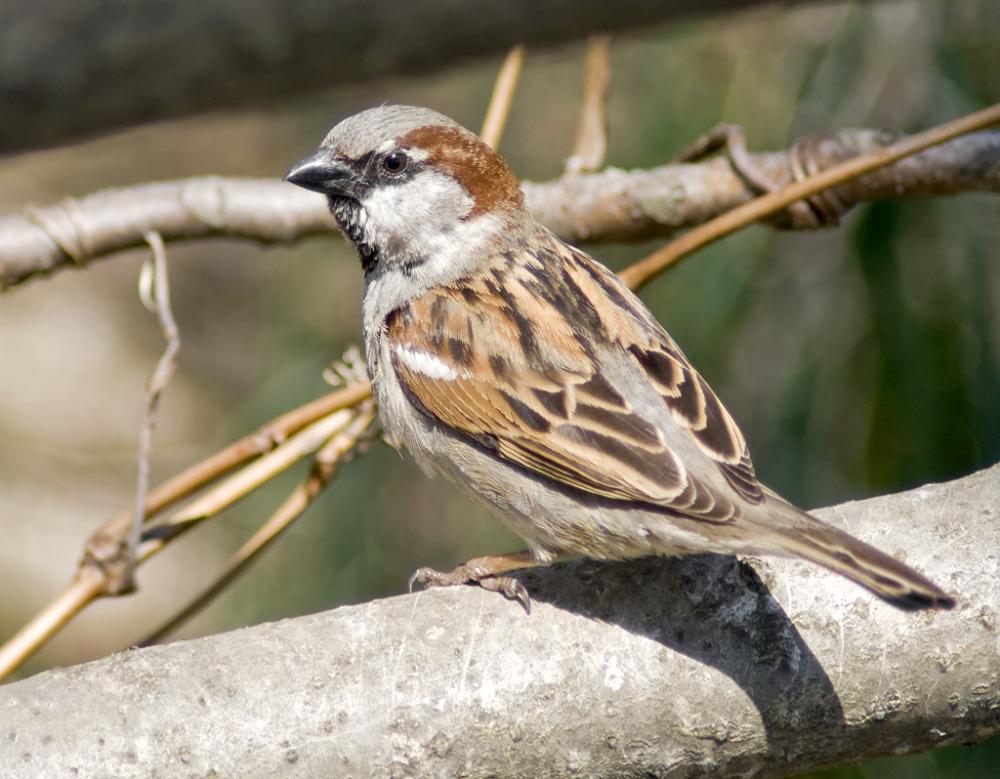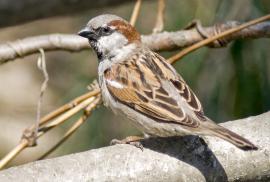Guide to Boreal Birds
Overview
The entire North American population of the House Sparrow is descended from a few birds released in New York City's Central Park in 1850. These birds found an unoccupied niche-the many towns and farms of the settled parts of the country-and quickly multiplied. As so often happens, introduced species can become a problem, and the House Sparrow is no exception. Because they compete for food and nest sites, some native species have suffered. Within a short time after their introduction, these sparrows adapted to the local environment. Thus the sparrows of the rainy climate of Vancouver, British Columbia, are plump, dark birds, whereas those inhabiting Death Valley, California, are slim, pale, sand-colored birds. These changes took less than 60 years, and influence our ideas about the speed of evolutionary change in birds.
Description
5-6 1/2" (13-17 cm). Male has black throat, white cheeks, and chestnut nape; gray crown and rump. Female and young are streaked dull brown above, dingy white below, with pale eyebrow.
Voice
Shrill, monotonous, noisy chirping.
Nesting
5 or 6 white eggs, lightly speckled with brown, in a loose mass of grass, feathers, strips of paper, string, and similar debris placed in a man-made or natural cavity. 2 or 3 broods a season. Sometimes builds a globular nest in a tree.
Habitat
Cities, towns, and agricultural areas.
Range/Migration
Introduced and resident throughout temperate North America. Native to Eurasia and North Africa, and introduced on all continents, excepting Antarctica, and many islands.



